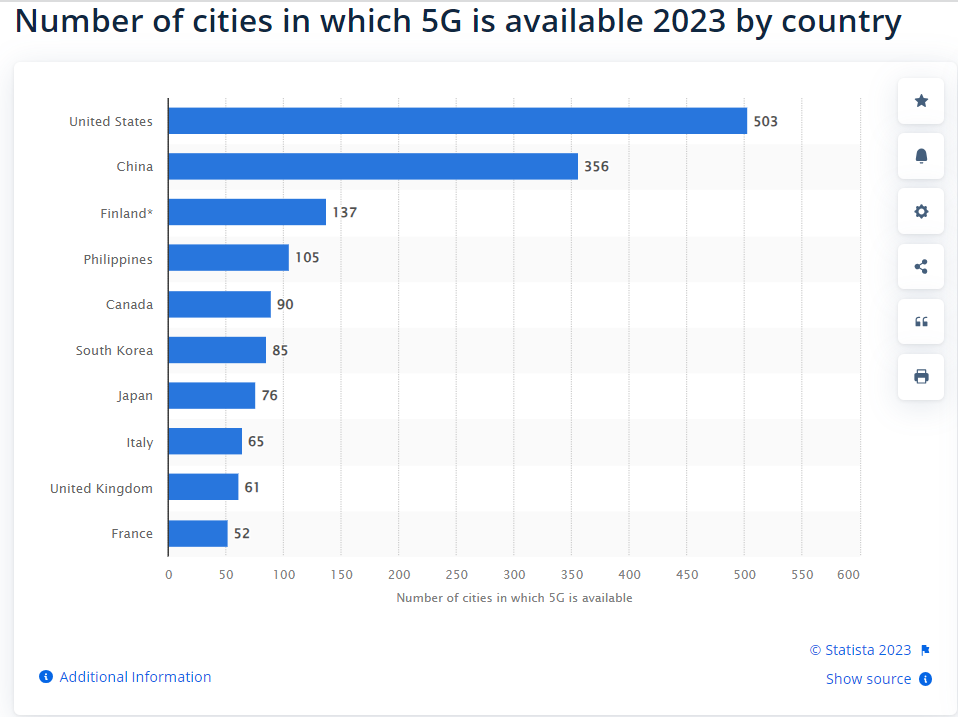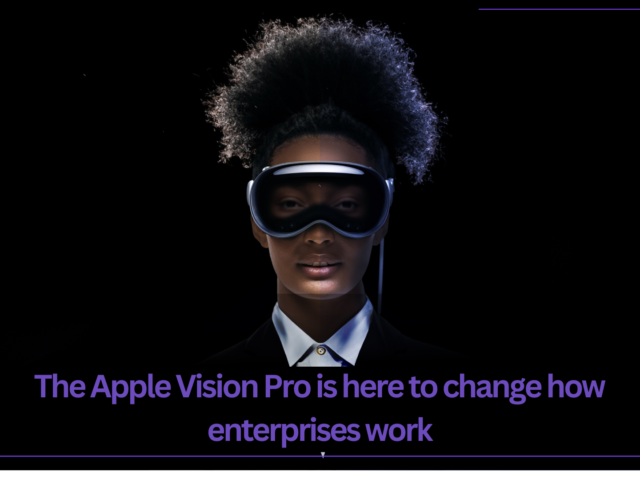Why is 5G a boon for enterprise XR?
Introduction:
5G technology is spreading around the world fast. According to a GSA report, around 70 countries had 5G networks as of June 2022, up from just 38 in mid-2020. Moreover, 5G is projected to reach 1 billion users in 2023. According to the chart below, The United States is currently at the forefront of 5G network adoption, with network providers like Verizon, AT&T, T-mobile, C Spire, and Xfinity, covering the country with high-speed technology. However, European and Asian countries have made significant inroads here as well.

The reasons why 5G technology has become so important is justified by the huge improvements it brings to business, technology, and education. And while this is great in terms of general progress, we are more excited about what it means for the technologies of the future: virtual reality (VR), augmented reality (AR), and mixed reality (MR).
But before we get into it, let’s go back to the basics. What is 5G and why is it important for extended reality (XR)?
5G, or “5th Generation,” is the latest advancement in wireless communications technology. Its remarkable speed and bandwidth capabilities hold the key to significant improvements in XR applications, including 3D holograms, VR, and AR experiences. Unlike previous generations, 5G surpasses the limitations of current cellular technology, enabling unparalleled connectivity and transformative experiences.
Here are some challenges that 5G overcomes for XR:
- Improved Connectivity: XR experiences require strong and reliable connectivity, which can be limited in home or previous cellular networks. 5G’s extensive coverage and enhanced mobile connections strengthen the link between XR devices, software, and computer systems. This ensures seamless experiences, even in diverse locations, removing connectivity barriers.
- Reduced Lag: XR encounters a delay between a user’s action and the system’s response, known as latency. 5G significantly reduces latency, approximately 10 times faster than previous networks. This decrease in lag enhances responsiveness, creating a more immersive XR experience. Users can enjoy smoother interactions, minimizing discomfort like “VR sickness.”
- Smoother Data Transmission: XR applications require substantial data transmission, which can overwhelm current connections, resulting in jumpy visuals or content that fails to load properly. 5G’s improved data processing capabilities handle larger data volumes simultaneously, enabling smooth transmission, improved reliability, and enhanced performance. Users can enjoy uninterrupted and seamless XR experiences.
- Enhanced Visual Quality: XR heavily relies on high-quality visuals to create immersive experiences. 5G’s ability to process larger files, such as 4K or 8K video streams, without lag or congestion ensures future XR devices can deliver more realistic and visually captivating graphics. This advancement elevates the overall quality and fidelity of XR headsets while maintaining comfort and portability.
5. Greater Mobility: 5G empowers XR users to move freely within virtual environments without concerns about losing connectivity. The reliability of 5G networks allows users to take their XR headsets to different locations, enabling uninterrupted experiences in diverse settings. This newfound mobility opens up exciting possibilities for critical training, remote collaborations, and productivity on the go.
Transforming Enterprise Processes with 5G and XR:
Now that we have spoken about how 5G can transform XR, let’s look at some ways enterprises can leverage the technology to revamp production, turbocharge training, and create a robust sales engine.
- Turbocharging Enterprise Training: XR-powered training offers immersive and engaging experiences for employees. With 5G, training becomes more effective and efficient, enabling workers to learn faster and retain knowledge better. Real-time XR simulations, made possible by 5G’s low latency and high bandwidth, enhance workforce development and safety across industries.
- Refining Remote Assistance and Maintenance: 5G’s low latency and high throughput facilitate real-time remote assistance and maintenance in XR environments. Workers can receive contextually-aware AI-driven instructions in XR, improving task completion speed and accuracy. This transformative capability minimizes operational downtime and enables collaboration across distributed teams.
- Making Product Design for efficient: 5G’s integration with XR enables remote collaboration and iteration on product designs. Teams can collaborate in high-fidelity XR environments, making rapid decisions and streamlining the design process. By shrinking design cycles from months to days, 5G-driven XR solutions improve efficiency, reduce costs, and enhance product quality.
- Transforming Manufacturing: XR, in conjunction with 5G, revolutionizes the manufacturing industry by enhancing machine maintenance, virtual inspections, and training on complex machinery. The convergence of XR, cloud computing, and AI empowered by 5G creates machine-to-machine interconnectedness, optimizing production cycles and increasing operational efficiency.
- Creating Better Retail experiences: 5G and XR redefine the retail industry, offering personalized and immersive shopping experiences. XR technologies allow customers to explore virtual stores, interact with products using AR, and enjoy multi-sensory retail-tainment experiences. With 5G’s extensive coverage and high-speed connectivity, XR-powered retail experiences can reach consumers anywhere, revolutionizing the shopping landscape.
The emergence of 5G technology is set to propel XR technologies to new heights, revolutionizing industries across the globe. By overcoming challenges related to connectivity, latency, data congestion, and mobility, 5G paves the way for immersive and transformative XR experiences. From training and maintenance to product design, manufacturing, and retail, 5G-driven XR solutions unlock unprecedented possibilities, improving productivity, efficiency, and collaboration in the enterprise world. As 5G networks continue to expand, the future of XR is poised to reshape industries and revolutionize the way we interact with technology.
Related articles
Get ready for the next generation of immersive experiences! Explore what’s in store with Meta Quest 3, Meta’s latest XR headset. Don’t miss out!
The Metaverse has emerged as a force to be reckoned with in our ever-evolving digital landscape, revolutionizing the way businesses engage their customers. And one arena they have begun exploring in gusto is shopping.
Now, nearly 40 years later, we find ourselves on the cusp of yet another reinvention of the personal computer, once again by Apple. It is speculated that the company will debut its much awaited XR headset at its Worldwide Developers Conference on June 5th.




